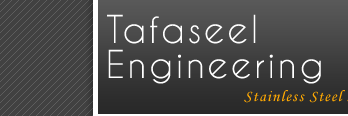
Home
About Us
Clients
Photo Gallery
Contact Us



DOCUMENTATION
The “Materials Joining Part (MJ-10)” of the2005 BPE standard lists documents required for a TOP (2, 5) to be turned overtop an owner for CGMP-validated distribution systems. Such systems include tubing systems on modules, super skids, and skids and the shop or field fabrication of tubing. ASME BPE compliance requires that every weld on a product contact surface in a biopharmaceutical plant must
Be identified on a weld map (such as the isometric). It must be fully traceable back to the original components, with heat number codes for each component, the date it was welded,
The welder’s identification number and whether or not the weld was inspected The TOP must include material test
Reports (MTRs), certified material test reports (CMTRs), certificates of compliance(C of Cs), and material examination logs. Sartorius BBI uses an incoming material examination log similar to that included in the appendix section of BPE 2005. Material test reports for fittings and process components including tubing, valves,
Pumps, filter housings, and instrumentation must be verified to the applicable specification(s) and be marked
With a heat number or code traceable to material test report Weld ends of fittings and other components to be welded must be faced with a square-cut end free from burrs, must conform to BPE dimensional tolerances, and must otherwise be ready for welding. All incoming items at SBBIS are received, assigned an internal part number, and placed in the quality control receipt examination area. Once a part has been examined and accepted, it is ready to be used in a project. If for any reason it is unacceptable, a “hold” tag is placed unit, and it is placed in a quarantined area and may not be used. Each project or weld assembly has a work order, a drawing, and a bill of materials. A file is compiled for the project, and control documents accompany the work order throughout the various stages of production and become part of the TOP.
This QC process helps to ensure that all material meets specification; for example, that a component of a less corrosion resistant grade such as type304 stainless steel, which lacks the molybdenum addition present in 316L is not used when type 316L was specified. It is also important to verify that weld ends specified as meeting the BPE specification are marked “BPE” when received. Even if the item was 316L and conformed to the American Institute of Steel and Iron (AISI) specifications, it may not conform to the BPE chemistry for weld ends, which limits both the upper and lower concentrations of sulfur, or to the BPE requirements for surface finish. Sulfur has a profound effect on weldability. The limited range specified by BPE of 0.005 to 0.017 wt % is designed to eliminate difficulties of welding very low sulfur materials or those with larger differences in sulfur concentration that may be difficult to weld.
The BPE surface finishes specification is also documented because a rougher than specified surface finish can hamper cleanability and reduce corrosion resistance. The control document is important to assure traceability from the mill to the component manufacturer and though welding and finishing at SBBIS. Thus the components of any finished weld assembly on a skid or in a system can be identified by ISO drawing number, internal part number and date of welding as well as the results of examination or inspection.
WELDING DOCUMENTATION
Welding documentation is also part of the TOP. This includes documents certifying welding procedures and welding personnel to ASME or BS , which consist of welding procedure specifications (WPSs), procedure qualification records (PQRs), and welder performance qualifications (WPQs) for manual welders, as well as welding operator performance qualifications (WOPQs) for orbital welding operators.
The qualifications for inspectors and examiners must also be included. Sartorius BBI Systems generates sample welds, also known as coupons, at the beginning of each day on the sizes being welded that day as part of its required QA/QC program. A sample weld log is a welded assembly with its control document (yellow) and weld map showing location of the assembly with each weld numbered on the CIP pump for a 750-L fermentor
82 Bioprocess International JUNE 2007 maintained for all projects. The production information includes the sample number, date, size, welder identification number, and weld program number.
Examination information includes a QC signature, date of examination, whether the coupon is accepted or rejected (A/R), and any relevant comments. Each welded coupon is placed in a clear plastic bag with the weld print-out from the welding power supply. Although weld sample logs are maintained indefinitely, the actual coupons are retained only for the life of a project. The ASME BPE, in accordance with the ASME B31.3 process piping code, distinguishes between examination and inspection. B31.3 requires that the external surfaces of all welds be examined, and a minimum of 20% of the welds be inspected internally on the product contact surface with a borescope or, when accessible, by direct visual inspection. The installer or person performing a weld makes the examination, and the owner or
Its representative (which may be a third-party QC company or a consultant) performs the inspection. The contractor must submit an inspection plan in which the percentage of welds to be inspected must be agreed on by the owner and/or user, installing contractor and/or engineer. The requirements for personnel performing examinations and inspections are listed in ASME B31.3 Chapter VI,
Paragraphs 340.4, 342.1, and 342.2
